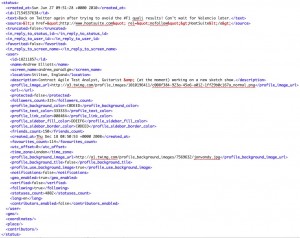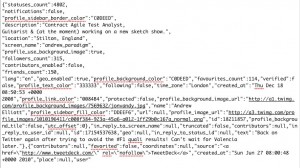This week I am taking care of a co-worker’s dog while he and his family visit the United States. It is bittersweet because my own dog, Laika, will not be joining me in Australia. She was two days away from being put on a plane to Sydney when my mother put her foot down and said, “no.” There’s no arguing with mom. End of story.
Of course, I am heartbroken, and guessing that I’m not the only one.

However, I take Laika, my beautiful girl, with me to work every day.

I am a tester. That means that I spend most of my days living in a hypercritical, hypersensitive, paranoid-beyond-belief state of awareness. If a link changes … I FRAKKING KNOW IT. If I find that the cheese has been moved, that users will be required to think I WILL TELL YOU. In fact, I WON’T SHUT UP UNTIL YOU FRAKKING FIX IT!!!!!
and yet…
This same attitude is unhealthy for team work, and it’s no way to treat other people. It is easy, as a tester, to be intimidating, self-righteous, and insistent that everything be exactly as I want it down to the pixel and bug priority. I don’t have to work hard at making the devs I work with feel nervous, break a sweat or stutter. At this point, I know what fear looks like because I see it every day from developers as I am walking in their direction. I will leave the guess work about how I ended up with these qualities to my shrink (He’s on speed dial. I know yours is too so don’t bother trying to play stupid, we’re all testers here.) Testing, at its worst, is all about blame and intimidation. Think about it. Have you ever gone looking for problems just to prove that a developer’s work was crap? I think we all have. In that case, testing has nothing to do with making better software and everything to do with power.
This used to be how I treated people, in general. My strategy for getting someone to do something used to involve the following: manipulation, blame, shame, fear, intimidation and also lots and lots OF SHOUTING. I used to think that customer service representatives were for screaming practice. Of course, I feel quite bad about this now. At the time, I thought it was the only way.
I persisted with this horrible attitude about motivation and working with others until I got Laika. When I got her as a puppy, I knew that I did not want to ever
- hit her (even if she pooped on the floor)
- scream at her
- or make her feel bad for something beyond her control
Knowing this and knowing that my own tactics for discipline were absolutely terrible, I signed Laika and myself up for dog training. What I didn’t know about dog training is that it’s actually dog-owner-training. Rather than training us dog owners how to scream at our dogs, we were trained on how to be sure our dogs understood whatever the hell it was we wanted them to do. It was explained pretty clearly to us owners that if our dogs didn’t understand what we wanted, we had no one to blame but ourselves. The assumption here is that dogs want to do what you tell them. Most dogs don’t want to lead (unless they are alpha and if you chose the alpha, you can’t blame the dog for being who they are.)
What does it mean to use positive reinforcement? It means that when you tell the dog to do something and they do it, you give them lots of treats and praise, mainly praise unless you want your dog to be fat. But praise is fun! I have more fun saying, “Oh you’re so great” than if I had to scream, “bad dog.” The power of positive reinforcement was most apparent when I trained Laika to use the command, “leave it.” This command means “drop whatever that is and walk away.” If Laika ever picked up something I didn’t want her to pick up or she was going somewhere I didn’t want her to go, I would say, “leave it.” She would immediately turn around and walk away. When she did that, because she did what she was supposed to do, I could give her positive reinforcement by saying, “Good dog! Good leave it!” Instead of screaming at her for touching something I didn’t want her to touch, I could tell her “good dog” for doing what she was supposed to do. No drama! No hard feelings!

I worked with Laika every day at the commands we were taught in dog class. She loved it. I loved working with her. It was a great feeling to understand each other and to reach the goal of communicating together. This extended way outside of the classroom. It meant that I could take here anywhere she was allowed and know that she would listen to me. We became very comfortable with each other because we knew what to expect from each other and we enjoyed each other’s company. There was respect and love on both sides.

Working through this training changed my whole attitude. I realized that positive re-inforcement applies to working with people as well and it’s something that I use every day. I still log defects, but I also take every opportunity I can find to tell devs and other teammates when they do something well. Here are some examples:
- I’m glad you brought that point up in our meeting
- Thank you for identifying that risk
- I really like this feature. These issues need fixing, but I think people will love it. Good job!
But this is about much more than just saying nice things. It’s at the heart of why I like working in software. It’s because I enjoy knowing that I’ve reached a goal by communicating well with others and treating others the way I want to be treated. I might be an outspoken individual, but I prefer team wins. Team wins are not about ego, power or intimidation. There are no extra points for making developers feel shitty when they are already working as hard as they can (which I believe they are in most cases). These wins are about a team picking up each other’s slack and getting each through when things are confusing or difficult. Let’s face it: in software, as in life, confusing and difficult is most of the time. For testers, it’s about finding the weaknesses in the team and getting the team to address those with the least amount of damage possible. When I say damage, I include emotional damage. Minimizing this damage is not a soft skill. It is an extremely hard skill which takes more patience, practice and time than causing the damage in the first place.
My dog taught me this. She’s amazing, and I miss her.




















![Reblog this post [with Zemanta]](http://img.zemanta.com/reblog_e.png?x-id=cbbce260-874e-4067-8506-98b5d21c8df5)
